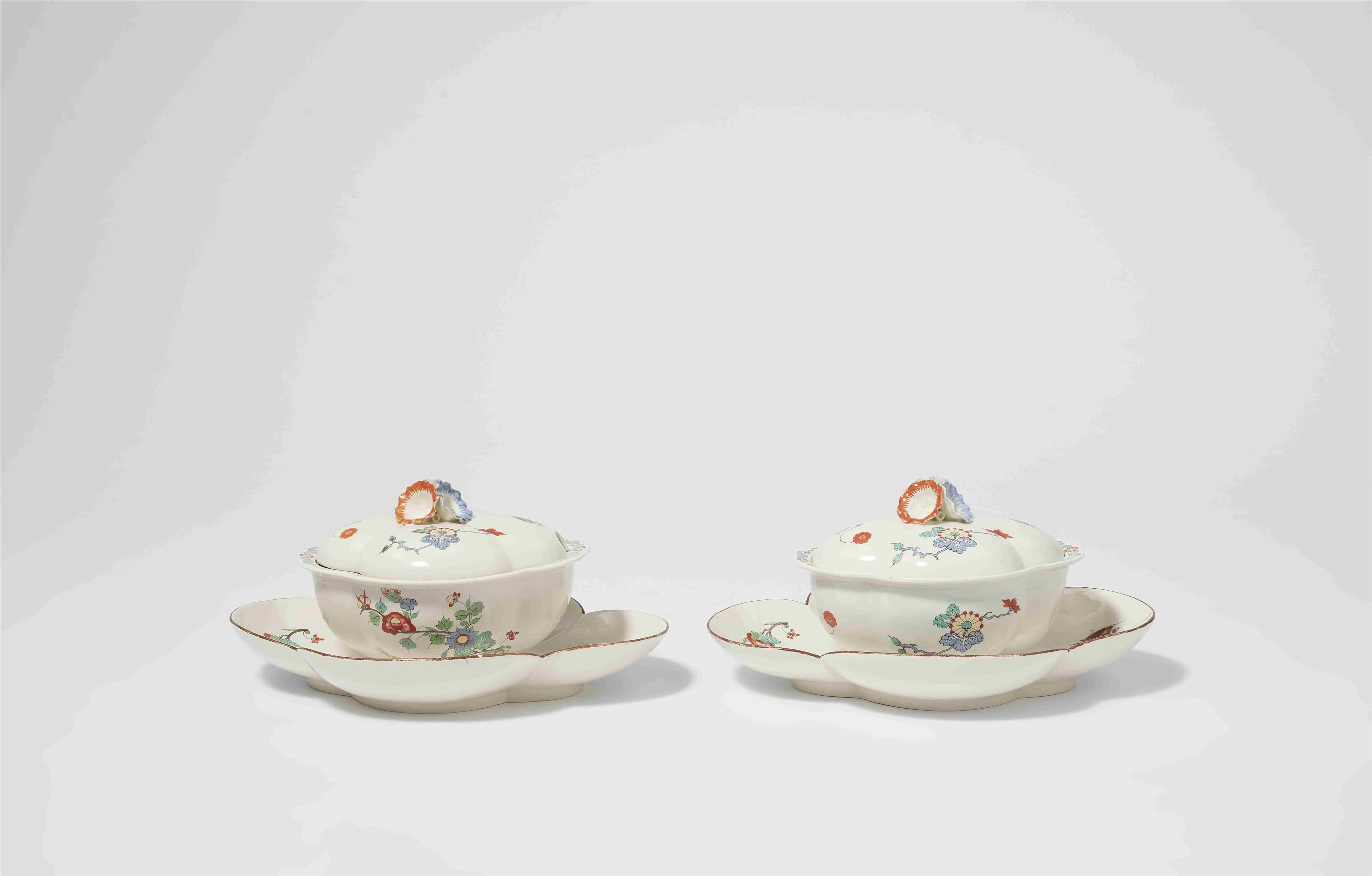A rare pair of Chantilly porcelain tureens on saucers
Soft paste porcelain vessels decorated with Japonesque motifs. Iron red post horn mark. A short restored vertical crack to the side of one tureen, minor restored chips to both finials. H tureen c. 10, W plate c. 24 cm.
C. 1730/40.
In France, soft paste porcelain, i.e. porcelain that did not contain kaolin, in contrast to that produced in Meissen, had been being made in Rouen since 1673. The so-called "pâte tendre" was particularly translucent and lighter than masses containing kaolin, but also less hard and resistant when fired.
The first French porcelain factories were established in the first third of the 18th century in Saint-Cloud, Chantilly and Mennecy, all located in and around Paris. The porcelain from Saint-Cloud was decorated early on with lace borders in cobalt blue applied under glaze. Later gold decoration was added, which Böttger's former employee Christoph Conrad Hunger brought to France from Meissen via Vienna and Venice.
Louis Henri de Bourbon, Prince de Condé, who founded the porcelain manufactory in Chantilly in 1725, loved Asian porcelain, but especially pieces from the manufactory of the Kakiemon family from Arita in Japan. The Chantilly manufactory sought to copy these extraordinarily precise forms and decorations scrupulously, and many pieces in international collections prove their mastery.
Mennecy, the last of these early manufactories, was founded in 1734 in the Rue de Charonne in Paris, from whence it moved to Mennecy in 1748 and later to Bourg-La-Reine. The forms and decorations were initially based on the products from Saint-Cloud and Chantilly, but the influence from Vincennes increased later. Only very few figures were produced in any of these three factories up until the middle of the century, because the pâte tendre was not especially stable and there was always the danger that the pieces would break during the firing process in the kiln.
Provenance
Roderick Jellicoe, London.
European private ownership.
Literature
Cf. Le Duc, Porcelaine tendre de Chantilly au XVIIIe siècle. Héritages des manufactures de Rouen, Saint-Cloud et Paris et influences sur les autres manufactures du XVIIIe siècle, Paris 1996, p. 83.

